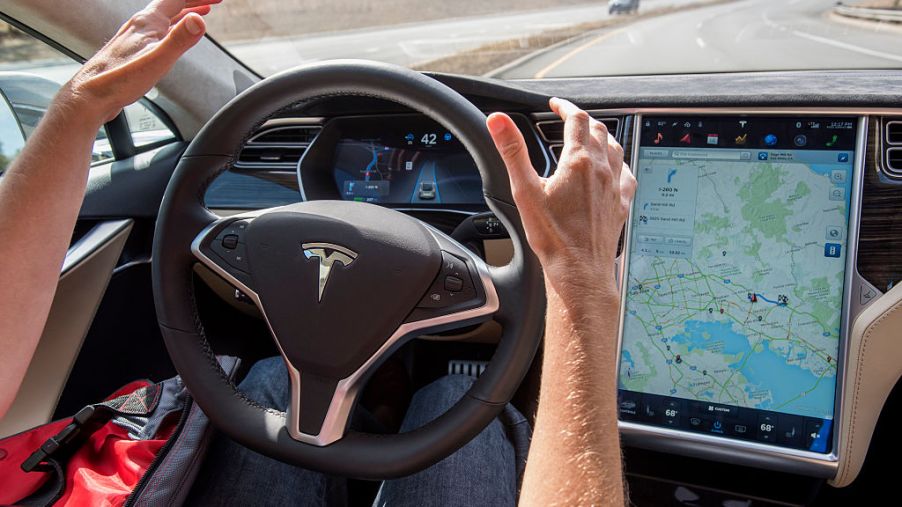
Tesla’s Autopilot Technology Was a Factor in Fire Truck Crash, Says NTSB
Many think that the future of driving lies in self-driving cars. As with many vehicle technological advancements, Tesla is on the cutting edge. It currently provides autopilot technology in its newer models, allowing the vehicle to assist with some of the more burdensome aspects of driving.
Unfortunately, many Tesla vehicles have been involved in accidents while in autopilot mode. Tesla has been struggling to improve the technology, and the National Transportation Safety Board (NTSB) has voiced concerns that the technology promotes a dangerous lack of driver engagement.
What is Tesla’s autopilot?
All new Tesla cars include advanced hardware that enables autopilot advanced safety and convenience features. Tesla plans to use the same technology to one day enable complete self-driving capabilities. Current models are equipped with eight external cameras, a radar, 12 ultrasonic sensors, and a powerful onboard computer.
Currently, autopilot allows a car to steer, accelerate, and brake automatically within its lane. Additionally, the navigate setting allows autopilot to suggest lane changes and make adjustments for the most efficient driving experience. The current features require active driver supervision, but Tesla plans to continue introducing new features and functionality through software updates.
The National Highway Traffic Safety Administration (NHTSA) has detailed five levels of automation. The current Tesla models with autopilot are classified as Level 2 which is partial automation. This level requires a vehicle to have automated features but also requires active driver engagement.
Accidents in Tesla’s autopilot mode
According to Tesla, autopilot makes driving safer. Tesla’s third autopilot safety report shows that for drivers using autopilot, there was one accident for every 2.87 million miles driven. When Autopilot was not in use, the data showed one accident for every 1.76 million miles driven. This is all in comparison to NHTSA data which shows that in the U.S. there is a car crash every 436,000 miles.
No matter the data or statistics, autopilot has come to be associated with a number of car crashes, several of which have been fatal. A few of the most notable accidents include:
- In 2016, Joshua Brown was killed after his Model S crashed into a semi-truck in Florida while using autopilot. Brown only placed his hands on the wheel for 25 seconds of the 37 minutes autopilot was in use despite numerous warnings. Two months after the accident, Tesla introduced a feature that disables autopilot after numerous warnings that are ignored.
- In January 2018, a driver who was eating breakfast in his car ran into the back of a fire engine in California.
- In March 2018, a Model X crashed into a highway barrier in California, killing the driver Wei Huang. Huang received multiple warnings to engage during the drive.
- In March 2019, Jeremy Banner was killed after his Model 3 crashed into the side of a trailer of a truck while using autopilot.
While Tesla has attempted to push through some software updates to address issues of driver attentiveness, they don’t seem to be doing the trick. Tesla’s marketing could also be confusing drivers as to the level of engagement necessary for drivers using autopilot. In fact, the name autopilot itself could mislead drivers into thinking less engagement is required.
NTSB findings regarding a 2018 accident
The NTSB performed an in-depth investigation of the 2018 California crash into a fire engine. The data uncovered by NTSB revealed that the autopilot was engaged for nearly 14 minutes prior to the crash. The driver didn’t touch the steering wheel for almost four minutes before the crash. The driver was said to be distracted by breakfast and the radio.
The Model S involved in the accident began speeding up from 21 mph to 80 mph after a lead vehicle changed lanes. Autopilot only detected the fire truck 0.49 seconds before the impact. The Tesla was going 30.9 mph when it hit the stopped truck.
The NTSB has previously advised automakers to develop applications that can more effectively sense the driver’s level of engagement. Tesla was the only manufacturer that did not respond. In its most recent report, the NTSB concluded that autopilot allows drivers to disengage too easily from their driving responsibilities.
While self-driving cars may be the way of the future, it seems we have a long way to go before these vehicles are safe for the streets.


